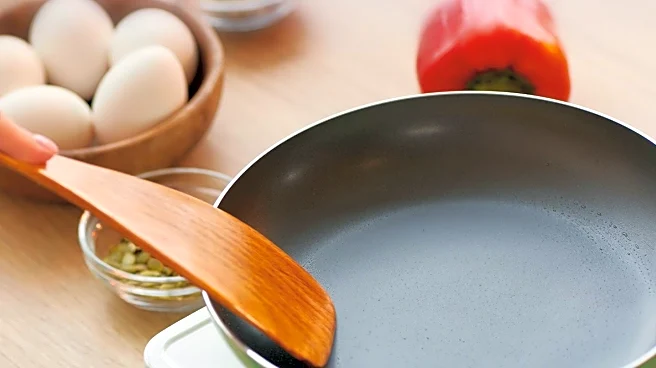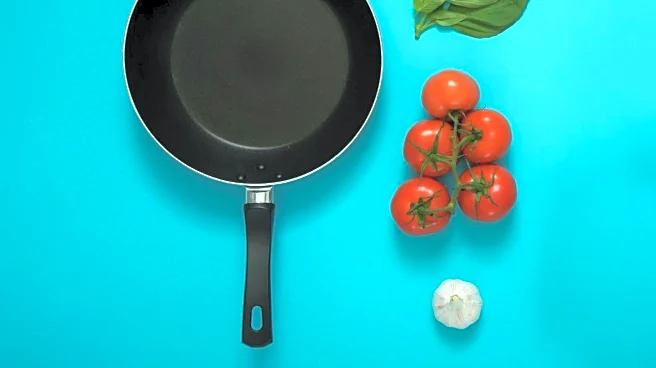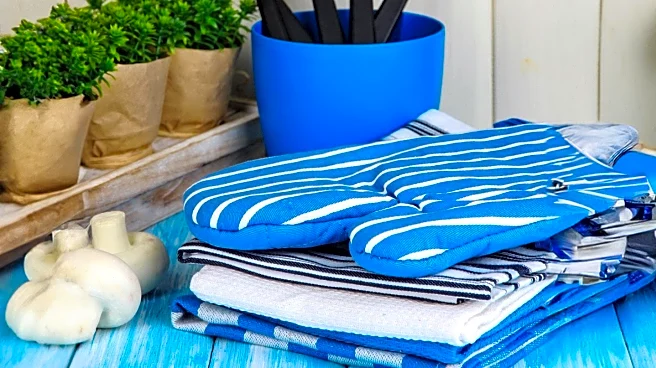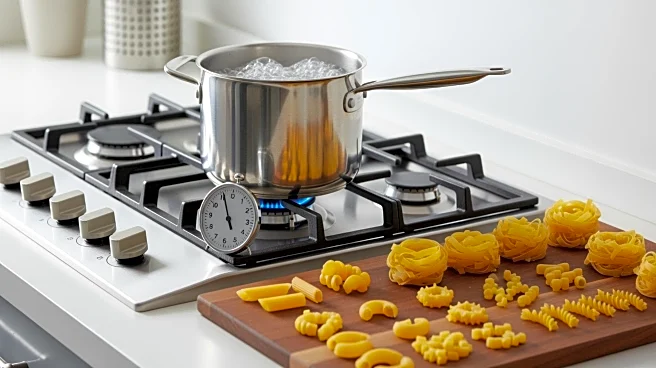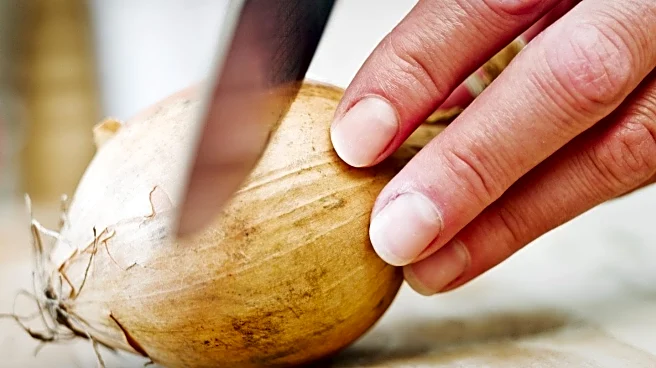What's Happening?
Richard LaMarita, a chef-instructor of Health-Centered Culinary Arts at the Institute of Culinary Education in New York City, advises against cooking certain foods in nonstick pans. While nonstick pans are
popular for cooking sticky foods like scrambled eggs and pancakes, they are not suitable for high-heat cooking required for searing meats or caramelizing vegetables. High heat can degrade the nonstick coating, potentially introducing particles into food. Additionally, acidic foods can corrode the nonstick surface over time.
Why It's Important?
Understanding the limitations of nonstick cookware is crucial for home cooks to avoid damaging their pans and compromising food quality. Nonstick pans are designed for low to medium temperatures, making them unsuitable for achieving the Maillard reaction, which is essential for flavor development in seared meats and caramelized vegetables. Misusing nonstick pans can shorten their lifespan and affect the taste and texture of food. This advice helps consumers make informed decisions about cookware choices, ensuring better cooking results and longer-lasting kitchen tools.
What's Next?
Home cooks may consider investing in alternative cookware such as stainless steel, carbon steel, or cast iron pans for high-heat cooking. These materials provide better surface heat for searing and caramelizing, enhancing flavor development. Consumers can also explore ceramic nonstick options, which may offer improved durability and heat tolerance. As awareness of cookware limitations grows, manufacturers may innovate to create more versatile nonstick products that can withstand higher temperatures and resist corrosion from acidic foods.
Beyond the Headlines
The advice against using nonstick pans for certain foods highlights broader considerations in kitchen safety and sustainability. As consumers become more conscious of the environmental impact of cookware materials, there may be increased demand for eco-friendly and durable options. The discussion also underscores the importance of understanding the chemical properties of cookware coatings and their potential health implications. This awareness can drive innovation in the cookware industry, leading to safer and more sustainable products.


